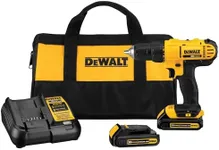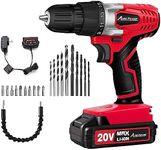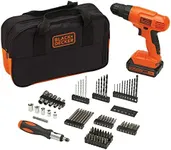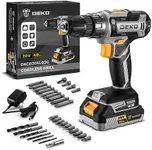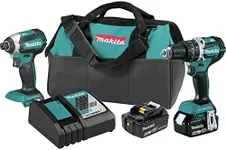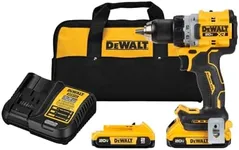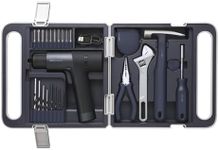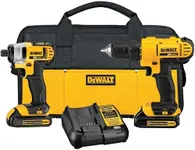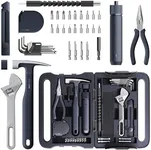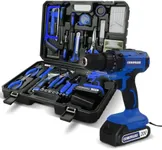Buying Guide for the Best Cordless Drills For Home Use
Choosing the right cordless drill for home use can make your DIY projects much easier and more enjoyable. When selecting a cordless drill, it's important to consider several key specifications to ensure you get a tool that meets your needs. Here are the main specs to look at and how to understand them.Battery VoltageBattery voltage determines the power of the drill. Higher voltage means more power, which is useful for heavy-duty tasks. For home use, a drill with a voltage between 12V to 18V is usually sufficient. If you plan to do light tasks like hanging pictures or assembling furniture, a 12V drill will be adequate. For more demanding tasks like drilling into masonry or metal, consider an 18V drill.
Battery TypeThe type of battery affects the drill's performance and longevity. Lithium-ion batteries are the most common and preferred type because they are lightweight, have a longer lifespan, and hold a charge well. NiCad batteries are heavier and have a shorter lifespan but are generally cheaper. For home use, lithium-ion batteries are recommended for their convenience and efficiency.
Chuck SizeThe chuck size determines the maximum diameter of the drill bit that the drill can hold. Common sizes are 3/8 inch and 1/2 inch. A 3/8 inch chuck is suitable for most home projects, while a 1/2 inch chuck is better for larger, more demanding tasks. Choose a chuck size based on the types of projects you plan to undertake.
Speed SettingsSpeed settings refer to the number of rotations per minute (RPM) the drill can achieve. Variable speed settings allow you to adjust the speed based on the task. For general home use, a drill with two-speed settings (low and high) is usually sufficient. Low speed is ideal for driving screws, while high speed is better for drilling holes.
TorqueTorque is the twisting force that the drill applies. Higher torque is necessary for tougher materials. For home use, a drill with adjustable torque settings is beneficial as it allows you to control the force applied, preventing damage to materials. Look for a drill with a range of torque settings to handle various tasks around the house.
Weight and ErgonomicsThe weight and ergonomics of the drill affect how comfortable it is to use. A lighter drill is easier to handle, especially for extended periods. Ergonomic designs with comfortable grips reduce strain on your hands and wrists. For home use, choose a drill that feels comfortable and balanced in your hand to ensure ease of use.
Additional FeaturesAdditional features like LED lights, keyless chucks, and built-in levels can enhance the usability of the drill. LED lights help illuminate dark work areas, keyless chucks make changing bits easier, and built-in levels ensure accurate drilling. Consider these features based on your specific needs and preferences to make your projects more efficient.
